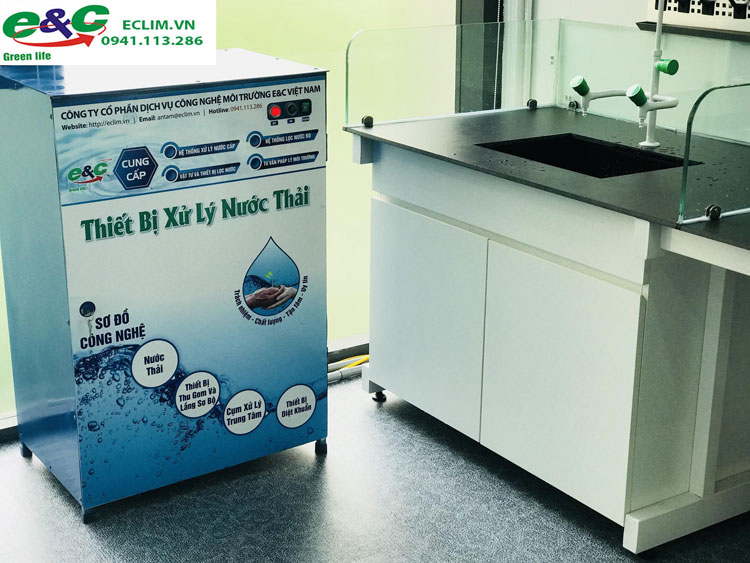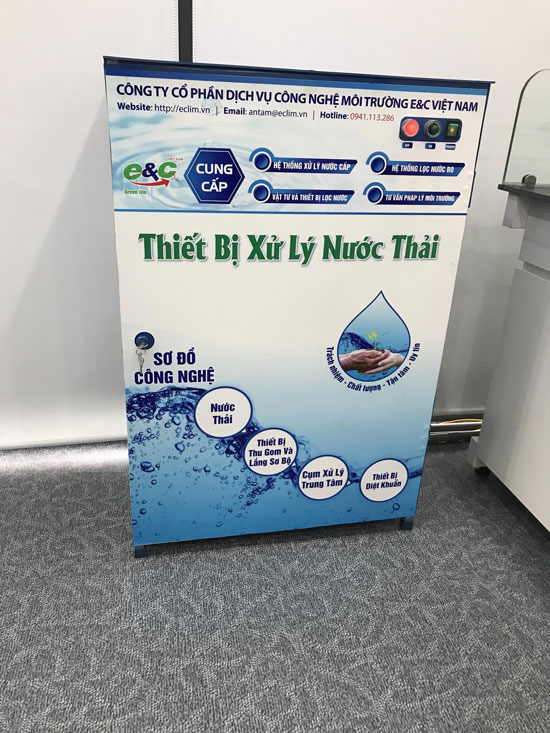Learn wastewater treatment technology for laboratories and testing at hospitals and medical facilities from Eclim.
Laboratory and experimental wastewater must be treated according to standards before being discharged into the environment. This is to protect health and the natural environment. Therefore, hospitals and medical facilities need to build wastewater treatment systems for laboratories and experiments that meet the requirements of the Ministry of Health

Eclim Vietnam's laboratory wastewater treatment equipment
See our laboratory wastewater treatment solutions below. Contact Hotline if you need further advice.
Harmful effects of laboratory and experimental wastewater
The laboratory is where activities such as analytical sample processing, chemical preparation and storage take place. The laboratory performs the process of examining and analyzing patient samples to accurately assess the disease condition and provide appropriate treatment methods.
Laboratory and testing wastewater comes from cleaning activities, body fluids, surgery, rinsing tools, chemicals, blood... They contain toxic organic and inorganic substances such as :
The medical wastewater treatment system will help remove the above compounds, preventing serious effects on human health and many other harmful effects that arise.
In addition, at ECLIM, customers also receive free consultation and inspection of legal procedures and documents in accordance with the provisions of law.

Step 1: Trash screen
Garbage screens have the effect of removing organic substances and large-sized waste in wastewater such as paper, towels, fabric fibers, equipment debris... before transferring wastewater into the collection pit.
Step 2: Air conditioning tank
The water source from the collection pit is led through the equalization tank to adjust the flow and concentration. During this process, the air blower operates continuously, avoiding anaerobic conditions that cause unpleasant odors. At the same time, the temperature and pH of the wastewater also need to be adjusted to avoid shock loading.
Step 3: Treat by chemical method
Under the influence of H2O2, O3 is oxidized, generating OH- radicals with strong reducing properties, causing BOD5 and COD content to decrease by up to 90%; TSS and Coliform content reduced by up to 95%.
Step 4: Flocculation - creating flocculation
Then, the wastewater is led through the sedimentation tank, PAC chemicals are added to help bind small sediment particles into large sized sediment flocs, which settle to the bottom of the tank to form sludge. The sludge is transferred to the sludge tank.
Step 5: Treat laboratory wastewater and test using biological methods
+ Anoxic treatment: Anoxic tanks contain anaerobic microorganisms, which help reduce N and P in wastewater.
+ Aerobic treatment: After leaving the Anoxic tank, the water is led into the Aerotank. This tank contains aerobic microorganisms, which help absorb and decompose organic matter into a food source, reducing BOD, COD and organic matter content in this tank.
Step 6: MBR filter
MBR filter membrane with extremely small filter holes helps the wastewater treatment system become optimal. Organic matter on the filter surface will be decomposed by microorganisms, forming activated sludge.
At this step, another activity takes place, a part of the activated sludge is sent to the anoxic tank to maintain microbial density, a part of the sludge is sent to the storage tank for periodic treatment.
Step 7: Disinfect
Clean water after passing through the MBR membrane will be pumped into a chlorine or NaOCl disinfection tank to kill remaining bacteria and disease-carrying fungi. Laboratory effluent will meet QCVN 28:2010/BTNMT standards.
Note: For some laboratories and experiments with not too large waste flow volumes, pre-fabricated treatment systems can be used. This is a block system, usually containing 1 to 3 stages. The advantages of a pre-assembled system are investment cost savings, simple operation and ease of operation.
For further information, please contact hotline 0941 113 286.

0 comments